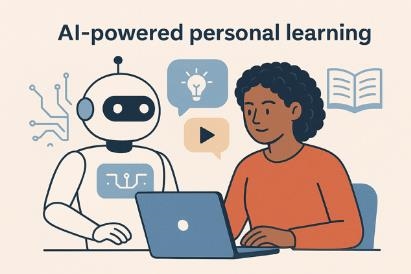Dark patterns in AI interfaces are getting more and more advanced. Companies employ AI’s analytical powers to discreetly guide users into costly upgrades through carefully designed interfaces that walk a tight line between useful assistance and coercive compulsion. These companies are getting really good at invisible persuasion by utilizing AI-driven data to push people toward decisions that will make them money without raising any red flags or opposition.
AI changes static menus into dynamic, personalized experiences that guess what users will do and gently steer them in the right direction. These aren’t random anomalies; they’re well planned strategies—dark patterns—that take advantage of people’s cognitive biases and emotional reactions. For example, AI chatbots can keep consumers stuck in loops while seeming to help them, always pushing premium plans. Algorithmic nudging selectively shows offers that are mostly meant to make more money, and synthetic customization makes it look like knowledgeable, personalized advise that leads consumers to paid tiers. At the same time, unclear consent dialogs hide defaults that are meant to trick people behind machine learning–predicted preferences.
AI makes these dark patterns much worse in ways that are both very effective and hard to see. This is because optimization-driven algorithms naturally lead to these kinds of manipulations. Models that are taught to get the most clicks or upgrades will always make coercive interfaces—designs that successfully push people into choices that may not be what they really want. This tendency is more than just a hassle; it also presents serious concerns: it erodes customer trust, limits user freedom, and attracts further regulatory scrutiny as watchdogs look into how AI takes advantage of privacy and decision-making flaws.
It’s amazing that this isn’t a far-off threat; it’s already firmly ingrained in the platforms that many of us use every day. Studies show that about 10% of big e-commerce sites utilize dishonest methods, such as hidden fees and pre-selected subscriptions, to steer customers onto expensive plans. Autoplay algorithms and unending recommendation loops on social media keep people interested, but they also change how people act in order to make money off of their attention. Picture a deepfake video conversation from an AI that looks like your bank manager and uses your personal information and emotional cues to get you to buy expensive financial products. It is very near to being misused.
Companies who want to stay ahead of the game are at a major crossroads: will they continue to deploy sneaky AI-driven upselling, or will they promote ethical design that respects user freedom and builds long-term brand loyalty? The latter option requires rethinking how AI personalizations are generated, making sure that permission procedures are clear, and finding a balance between corporate goals and creating real value. Regulatory pressure is growing quickly, pushing entrepreneurs to create “transparent and empowering AI experiences” instead of hidden funnels.
Designers and leaders can use realistic strategies to go through this area with honesty:
– Do ethical checks on AI interfaces, focusing on user freedom and clear consent.
– Use explainable AI that makes it clear why individualized nudges happen.
– Do user testing that looks at more than simply conversions, such happiness and trust levels.
– Work with regulators to develop and execute rules that make dark patterns that take advantage of people illegal.
– Teach users how to recognize and fight little AI manipulations.
Dark patterns in AI are a big problem, but they also provide us a great chance to change how people trust technology and give them more authority. When businesses employ AI in a responsible and open way, they may make experiences that are very effective and “gently nudge” people into upgrades that are worth their time and money instead of forcing them to make expensive commitments. The future is better for people who perceive AI as a way to give people more options, not as a way to take advantage of them.





